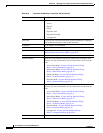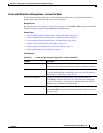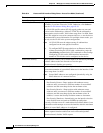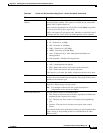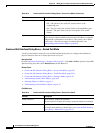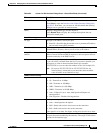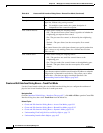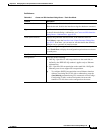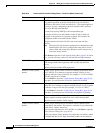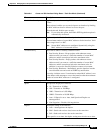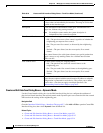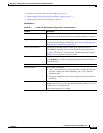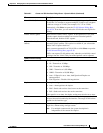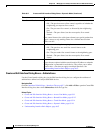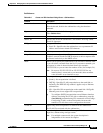
65-16
User Guide for Cisco Security Manager 4.4
OL-28826-01
Chapter 65 Managing Cisco Catalyst Switches and Cisco 7600 Series Routers
Interfaces
Native VLAN (Select button) Enables you to select the Native VLAN to associate with this interface,
using the ID specified in the VLAN ID field. (If no VLAN ID is
specified for the Native VLAN, the default is 1.) This option applies to
you only if you are configuring a physical interface that is meant to
serve as an 802.1Q trunk interface.
You must first specify DOT1Q as the encapsulation type.
The Native VLAN of a trunk interface is the VLAN to which all
untagged VLAN packets are logically assigned. This includes the
management traffic associated with the VLAN.
When deselected, the Native VLAN is not associated with this
interface.
Note The Native VLAN cannot be configured on a subinterface of the
trunk interface. Be sure to configure the same Native VLAN
value at both ends of the link; otherwise, traffic may be lost or
sent to the wrong VLAN.
Click Select to open the VLAN Selector Dialog Box, page 65-36. From
here, you can associate a native VLAN with the described interface.
Enable DTP negotiation When selected, enables Dynamic Trunking Protocol (DTP) negotiation.
DTP manages trunk auto-negotiation (ISL and 802.1Q) between
devices.
When deselected, disables DTP negotiation.
Allowed VLANs (Select
button)
Enables you to specify which VLANs are allowed on the trunk. Enter
the VLAN IDs. Use commas to separate multiple VLANs or use a
hyphen to indicate a range of VLANs (for example, 12,17,22 or 2-200).
Valid IDs range from 1 to 4094.
Or, click Select to open the VLAN Selector Dialog Box, page 65-36.
From here, you can select the VLANs to include on the trunk.
Prune VLANs (Select button) Enables you to specify which VLANs are eligible for pruning. Enter the
VLAN IDs. Use commas to separate multiple VLANs or use a hyphen
to indicate a range of VLANs (for example, 12,17,22 or 2-200.)
Or, click Select to open the VLAN Selector Dialog Box, page 65-36.
From here, you can select the VLANs that are eligible for pruning.
Enable VACL Capture When selected, enables VACL capture. If the capture bit is set, ports
with the capture function enabled can receive forwarded packets.
When deselected, disables VACL capture.
Capture VLANs (Select
button)
Enables you to identify the VLANs where VACLs should receive
forwarded VLAN packets. This option is available if you selected the
Enable VACL Capture check box.
Enter a comma-separated list of VLAN IDs, or click Select to open the
VLAN Selector Dialog Box, page 65-36.
VACLs can capture VLAN packets only when they are initially routed
or bridged into the VLAN. Only forwarded packets can be captured.
Table 65-6 Create and Edit Interface Dialog Boxes—Trunk Port Mode (Continued)
Element Description



